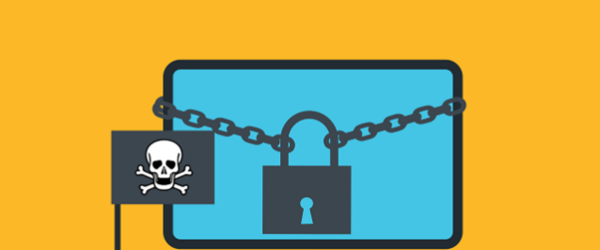Small businesses and startups need to identify Leland managed IT services and IT solutions that can both meet their immediate needs and have the capability to evolve with their growth trajectory. Scalable IT infrastructure involves investing in technology that can expand in capacity or functionality without necessitating a complete overhaul to avoid workflow disruptions and additional costs.
This means selecting versatile platforms that allow for incremental enhancements. For example, cloud services offer scalability, where you can adjust your data storage and processing power as needed. It is essential to incorporate IT support in Leland with key measures like adopting Software as a Service (SaaS) models, which can readily adapt to an increasing user base without significant downtime.
Engaging with IT professionals who have experience managing growth can give startups a competitive edge. They can provide valuable perspectives on optimizing IT architectures for flexibility, such as virtualization technologies that can allocate resources dynamically to where they’re most needed.
Comprehensive IT roadmaps can be developed to illustrate how each phase of technological advancement will correspond with business milestones. Through periodic assessments and adjustments, businesses can maintain their IT systems’ relevance and effectiveness, even as their operational needs change.
Recognizing When IT System Upgrades Are Necessary
Regular assessment of IT system performance is critical for recognizing the right moment for upgrades. Businesses should monitor key performance indicators (KPIs) that reflect system health, such as server response times, network latency, and application load speeds. These metrics can reveal inefficiencies and pinpoint where upgrades can yield the most significant improvements.
Establishing baselines and alerts for these KPIs can automate the monitoring process, ensuring that businesses respond swiftly to any signs of performance deterioration. This proactive approach not only keeps IT systems efficient but also reinforces the company’s commitment to providing an uninterrupted service to customers.
Stretching IT systems beyond their designed capacity is a perilous strategy that can lead to frequent system crashes, data breaches, and ultimately, loss of customer trust. As startups grow, the increase in data flow and transactions can overburden unprepared IT infrastructures, resulting in measurable financial and reputational damage.
It’s crucial for startups to understand the implications of overextension and take preemptive measures. This could mean opting for modular IT designs that allow for easy component additions or ensuring that IT systems have automatic scaling features to handle sudden spikes in demand.
Businesses must weigh the costs of IT upgrades against the potential benefits. A comprehensive cost-benefit analysis should include the immediate costs of the upgrade, ongoing maintenance expenses, and the expected ROI in terms of increased productivity and customer satisfaction.
The analysis should also consider the cost of not upgrading, such as potential downtime costs or lost business opportunities. Business owners should collaborate with IT experts to ensure a balanced view that aligns with both technical and financial considerations.
Planning Your IT Expansion
Building a solid foundation with a scalable IT framework is essential for businesses poised to grow. This involves selecting hardware and software that can serve business needs today and expand seamlessly tomorrow. For instance, opting for modular server systems can allow easy upgrades in processing power or memory as demands increase.
Deciding when to scale IT infrastructure can be as significant as the expansion itself. Businesses should align IT enhancements with growth milestones, such as launching new products or entering new markets. The timing of these expansions should factor in the preparation period for upgrading, staff training, and the potential for initially reduced productivity as new systems come online.
Timing should also consider external factors, such as market cycles and vendor product releases, which may affect the cost and efficiency of expansion choices. Strategic scheduling of IT expansions can provide ample time to prepare and minimize disruption to business operations.
As businesses grow, they often face a choice between expanding in-house IT capabilities or outsourcing to third-party service providers. Outsourcing can provide immediate access to scalable resources and specialized expertise without the need for substantial upfront capital investment. It can also offer the flexibility to adapt quickly to technological shifts.
Tailored IT Solutions for Different Industry Demands
Different industries have unique IT requirements that are essential to their operations. For instance, a healthcare startup needs robust data security and compliance measures due to the sensitive nature of health records, while a retail business may prioritize inventory management and e-commerce optimization.
By analyzing industry trends and common IT setups, businesses can use tailor-made IT solutions that provide competitive advantages. For example, adopting industry-specific software can streamline operations and provide deeper insights into market dynamics. Startups should seek out IT providers with expertise in their sector to ensure they receive the most suitable advice and technology.
A common challenge is to integrate new technology with existing legacy systems without causing disruption to daily operations. It’s crucial to plan these integrations carefully to avoid data silos and compatibility issues.
Strategies such as using middleware to facilitate communication between new and old systems or gradually phasing out legacy systems as new functionalities are adopted can help. Startups may also consider services that specialize in system integration to ensure a smooth transition and leverage the full capabilities of their IT infrastructure.
Budgeting for IT Growth Without Sacrificing Quality
Striking the right balance between cost and performance is key when budgeting for IT growth. Startups must evaluate the long-term value of their IT investments against the initial and ongoing costs. A focus on cost-effectiveness without compromising the quality of services and equipment assures that the IT infrastructure supports business operations reliably.
Investing in scalable solutions can initially seem expensive, but they often offer a better return on investment due to their longevity and adaptability. Businesses should conduct thorough research on different technologies and choose those that offer the best intersection of performance and scalability for their budget.
The financial aspect of IT expansion often poses a significant challenge, especially for startups with limited capital. Exploring different financing options such as leasing, loans, or subscription models can provide the necessary flexibility.
Some vendors offer financing plans that allow for gradual payment while startups benefit from immediate use of the latest IT equipment and services. Seeking partnerships or investors specifically interested in technological advancement could provide an infusion of funds earmarked for IT enhancements.
It’s also important for startups to actively seek the best value in IT investments, which often involves comparing multiple vendors and negotiating favorable terms. This may include discounts for bulk purchases, long-term service agreements, or support and maintenance inclusions.
Establishing strong relationships with IT vendors can result in better deals and ensure priority service. When comparing vendors, companies should consider not only the price but also the quality of customer service, the track record of reliability, and post-purchase support.
Securing Your Growing IT Environment
As businesses expand, their IT systems become more complex and, consequently, more vulnerable to cyber threats. Prioritizing cybersecurity in every layer of a scaling IT environment is paramount. Companies should adopt a security-first approach when selecting new IT solutions, ensuring that they come with robust security features that can be scaled as the company grows.
Cybersecurity measures such as multi-factor authentication, end-to-end encryption, and regular penetration testing should become standard practices. Additionally, educating employees on security protocols is essential, as human error remains one of the leading causes of breaches.
Protecting sensitive customer and company data is a critical concern for startups. As businesses grow and handle more data, they need to establish stringent data protection protocols compliant with regulations like GDPR or HIPAA, where applicable
Implementing backup and disaster recovery solutions ensures business continuity in case of data loss. These measures should be scalable and tested regularly to align with the growth of the IT setup. Also, consider investing in data loss prevention (DLP) software to monitor and control data transfer, preventing potential leaks or unauthorized access.
As businesses scale, providing comprehensive training to staff on IT security best practices is an investment in the company’s protection. This includes training on recognizing phishing attempts, managing passwords securely, and reporting suspicious activity.
Regular training sessions and updates as new threats emerge can empower employees to act as the first line of defense against potential security incidents. It’s also beneficial to establish clear policies and an organizational culture that prioritizes cybersecurity as a shared responsibility.
Streamlining IT Operations for Enhanced Efficiency
As IT networks grow in complexity with the business, implementing robust management tools is essential to maintain oversight and efficiency. Centralized management software can oversee network activity, automate routine tasks, and provide critical alerts on network performance or security issues.
These systems allow for streamlined management of resources, which is particularly important as startups begin to scale up operations. They offer practical solutions for IT teams to monitor a wide range of devices and services, ensuring that network performance remains stable and responsive to user demands.
Automation of routine IT tasks can free up valuable time for IT staff to concentrate on more strategic projects that propel the business forward. Automating software updates, data backups, and security scans ensure these fundamental tasks are performed consistently and without human intervention, reducing the likelihood of errors.
When streamlining IT operations, consider outsourcing certain functions to specialized service providers. This can include aspects like customer support, network management, or cloud services. Outsourcing can offer access to expert knowledge and cutting-edge technology without the overhead of maintaining a large, multifaceted in-house team.
Handling IT Downtime During Scaling Operations
When undergoing IT upgrading or expansions, managing downtime is critical to maintain business operations and customer satisfaction. Planning transitions during off-peak hours, notifying customers in advance, and having contingency plans in place are effective strategies to minimize disruptions.
Utilizing temporary solutions like cloud-based tools or virtual environments can ensure continuous availability of services while systems are being upgraded. Businesses must prepare their teams to handle any unexpected issues promptly to reduce the impact of downtime on the business.
A well-thought-out contingency plan is a safeguard against potential operational setbacks due to IT system upgrades or expansions. Prepare for scenarios such as data corruption, hardware failure, or security breaches by establishing robust backup and recovery procedures.
Regularly updated contingency plans, including clear roles and responsibilities, can enable rapid response to IT challenges, ensuring that startups can resume normal operations with minimal delay and data loss.
Transparent communication with stakeholders, including customers, employees, and investors, is key during periods of potential IT downtime. Providing timely information about planned upgrades, expected downtime, and what measures are being taken to ensure a smooth transition can foster trust and mitigate concerns.
Effective communication channels and protocols, such as email updates, social media posts, or special sections on the company website, can keep all parties informed and engaged during any IT-related adjustments.
Emerging Technologies and Trends
Knowing of emerging technologies is vital. Innovations such as AI, internet of things (IoT), and blockchain hold the potential to redefine IT systems’ efficiency and security. Embracing these technologies early can provide startups with a significant competitive edge by optimizing operations, enhancing data analytics, and fortifying cybersecurity.
Teams should allocate resources to research and development and build relationships with tech innovators to keep pace with these advancements. Investing in employee education and training ensures that the team can effectively deploy and manage these new technologies.
AI and machine learning are game changers for startups looking to scale. They can automate complex processes, provide personalized customer experiences, and uncover insights from large data sets. These technologies can help startups optimize resource allocation, predict market trends, and improve decision-making processes.
Cloud services also offer a dynamic and scalable infrastructure that is essential for growing startups. They provide the flexibility to adjust IT resources according to demand, enabling businesses to be more responsive to market changes and growth opportunities.
Leveraging cloud computing allows startups to collaborate more effectively, streamline workflows, and reduce the costs associated with maintaining physical IT infrastructure. As cloud services continue to develop, they will play an increasingly central role in supporting the scalable IT needs of burgeoning startups.
Why Businesses Need Scalable IT Solutions
Equipping your business with an IT infrastructure that not only meets current needs but is poised to grow as you do is an investment in your company’s future. As we’ve navigated through the various aspects of scalable IT solutions, from industry-specific recommendations to budgeting for growth, the underlying theme has been clear: proactive planning and strategic thinking are key to effectively scaling your IT environment.
Remember, the landscape of technology is ever-changing, and staying informed and adaptable is your best strategy. Balance cost with performance, prioritize cybersecurity, and always opt for flexible, scalable solutions. True to the entrepreneurial spirit, view your IT challenges as opportunities to innovate and differentiate your business from the competition.
Frequently Asked Questions About IT Systems
What are the most critical components of IT systems for a business?
In building a scalable IT system, the essential components include robust network infrastructure, flexible storage solutions, agile software platforms, and comprehensive cybersecurity measures.
Each of these should be selected with an eye towards future growth, ensuring they can be expanded or upgraded without major overhauls. Clear data management protocols and well-defined disaster recovery plans are necessary to safeguard operations against IT disruptions.
How can I tell if my IT infrastructure is hindering my business?
Signs that your current IT infrastructure may be a bottleneck include frequent system downtime, slow network performance, difficulties in handling increased transaction volumes, or challenges in integrating new applications.
It’s essential to assess whether your IT systems can scale with your business plans. Limitations here can inhibit your ability to grow and compete effectively, so the right tech support in Leland NC can help factor into this.
What’s the best strategy for budgeting IT in a growing business?
The best strategy involves a combination of proactive planning, vigilant monitoring of IT performance, and regular assessments of your business’s evolving IT needs. Establishing a clear IT budget that aligns with your business growth objectives, allows for flexible allocations, and includes contingency funds for unexpected expenses is critical.





